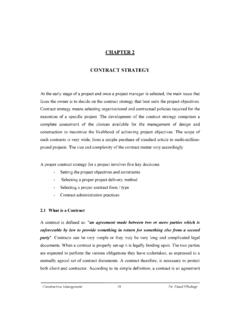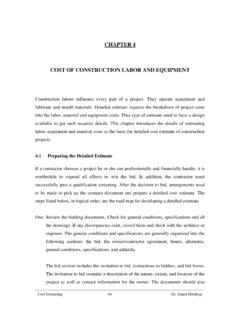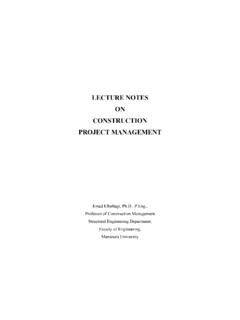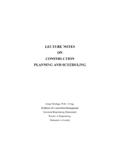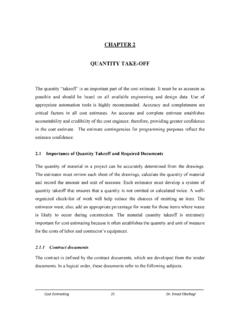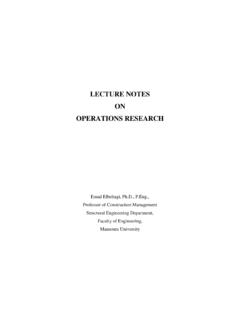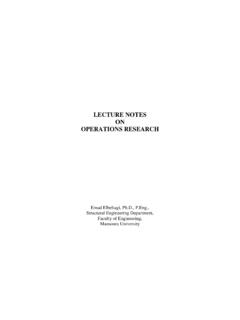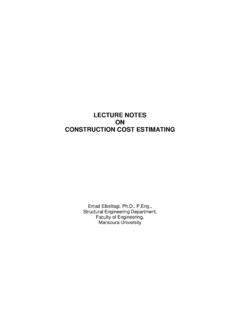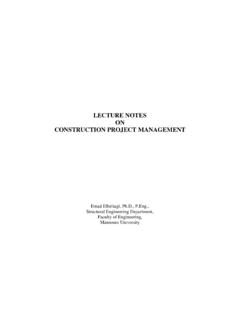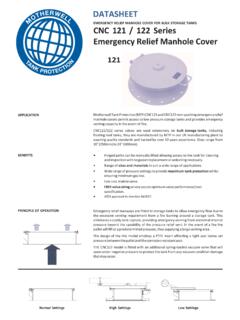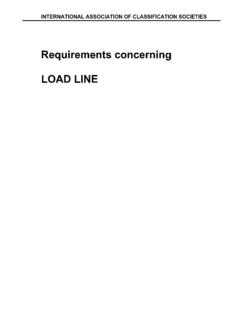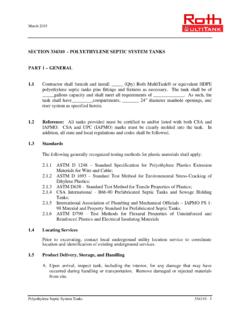Transcription of CONDITION ASSESSMENT OF SEWER NETWORKS - Mans
1 1 CONDITION ASSESSMENT OF SEWER NETWORKS Introduction SEWER collection systems are essential elements of municipal services. To ensure a high level of reliability at the lowest possible cost, asset management systems and procedures that include effective methods for CONDITION ASSESSMENT and rehabilitation must be implemented. CONDITION ASSESSMENT means to evaluate the readiness of a component to perform its function. Ideally, in any organization with capital assets, a CONDITION ASSESSMENT program finds and records the CONDITION of an organization s assets. Its tasks are to decide to assess CONDITION for some management purpose, identify whether pipe segment or system is to be assessed, locate and access the pipe if required, determine structural or material CONDITION or perform other tests, and record the information for management use.
2 Monitoring and Assessing Pipe CONDITION In the past, utilities decisions were based on operations, maintenance, and engineering departments. Nowadays organizations are more integrated; the same decisions require more information about CONDITION . Pipe CONDITION (or status) is often used to describe the overall serviceability and structural of pipes at a point of time in their lifetime. Because deterioration of SEWER pipes leading to pipe failures, the deterioration of SEWER pipes can be divided into structural deterioration and serviceability deterioration (Tran 2007).
3 The structural deterioration 2 is a continuing process that reduces the load bearing capacity and can be observed through the structural defects such as (WRC 1994): Fracture (F) Crack (C) Deformation (D) Surface damage (H) Sag (S) The serviceability deterioration is also a continuing process that reduces the discharge capacity of the pipe and can be observed through a reduction of cross-sectional area and an increase in pipe roughness due to (WRC 1994): Roots (R) Debris (DE) Encrustation (E) (or scale deposit) Infiltration (I) The task of monitoring and assessing the changes of pipe CONDITION over time becomes extremely important as part of proactive management strategies.
4 In the current management practice of sewers, this task consists of three steps (Tran 2007) .As following: (1) Selection of monitoring frequency, (2) Selection of inspection techniques and (3) Grading of pipe conditions . 3 Monitoring frequency: regular versus snapshot Bridges and pavements are subjected to a regular (or repeated) inspection program to identify structural defects during their lifetime. In particular, every bridge is legally required to be inspected once every two years (Madanat et al. 1995).Unfortunately, sewers pipes were not subjected to such regular inspection programs.
5 Instead, their inspection programs were of snapshot type, that is, a sample of pipes was inspected for only once (Kathula 2001). Inspection Techniques: CCTV versus others Inspection techniques can be grouped into three levels of ASSESSMENT according to the capability of the inspection techniques and the required information by asset managers (Ratliff 2003). The three levels are: Field reconnaissance (level 1), internal inspection (level 2) and External inspection (level 3). Field reconnaissance (level 1) aims to collect data of manholes, pits and pipelines and assesses the structure of manholes for accessibility of inspection equipment and even inspectors (Tran 2007).
6 Some of available inspection techniques for this level are: Manhole survey Global positioning system (GPS) This basic step often associates with reviewing as-built drawings and existing information in order to form the backbone of any management database. This task continues throughout service lifetime of the pipe systems whenever new information such as pipe replacement or repair occurs. 4 internal inspection (level 2) focuses on assessing the internal CONDITION of pipes so that appropriate action can be taken for pipes in poor CONDITION before the pipe collapse or occurrence of complete blockage of pipe (Tran 2007).
7 Some of available inspection techniques for this level are: Man-walk through Close circuit television (CCTV) Sonar (or ultrasonic) Focused electrode leak location (FELL) SEWER scanner and evaluation technology (SSET) Laser-based scanning system Multi-sensor pipeline inspection system External inspection (level 3) concerns with the soil structure that supports pipes. Any voids or loss of soil support is potentially leading to pipe collapse (Ratliff 2003).Some of available inspection techniques for this level are: Infrared thermographs Ground penetrating radar Micro deflection Impact echo wave impedance probe (WIP) Although as described above, there are several inspection techniques available for each level of ASSESSMENT , there are no guidelines for 5 selecting these techniques for a particular application.
8 In order to reduce time and effort in selecting the appropriate inspection technique, a number of researchers have provided comprehensive reviews of inspection techniques that were applied in many infrastructure facilities. Examples can be found in Wirahadikusumah et al. (1998), Morrison and Thomson (2003). In current management practice of sewers pipes, the GPS locator and the CCTV inspection were still the most used techniques for locating pipelines ( level 1) and assessing internal CONDITION of pipes ( level 2) (Wirahadikusumah et al. 2001; Morrison and Thomson 2003; Baik et al.)
9 2006). With hundreds of kilometers of pipelines, inspection costs become a critical factor for asset managers decisions, not to mention productivity. Grading of pipe CONDITION The Water Research Center (WRC) in UK devised the world first CONDITION grading scheme that provided protocols and guidelines for assessing current CONDITION of individual pipes using the CCTV inspection technique (WRC 1983). Based on the original scheme of WRC (1983), several CONDITION grading schemes were later developed in Canada (McDonald and Zhao 2001) and Australia (WSAA 2002).
10 Although the structural and serviceability deterioration of pipes are a continuous process (as explained in Section ), ordinal grading systems were used in these schemes for mapping the pipe deterioration into pipe conditions at the time of inspection. For example: The SEWER Inspection Reporting Code (SIRC) by the Water Service Association of Australia (WSAA 2002) was developed for assessing conditions of rigid 6 sewers (concrete and vitrified clay pipes) using CCTV inspection data as shown in Table Table : Description of CONDITION states used in WSAA (2006) CONDITION Grading Structural CONDITION Serviceability CONDITION 1 Insignificant deterioration of the SEWER has occurred.
